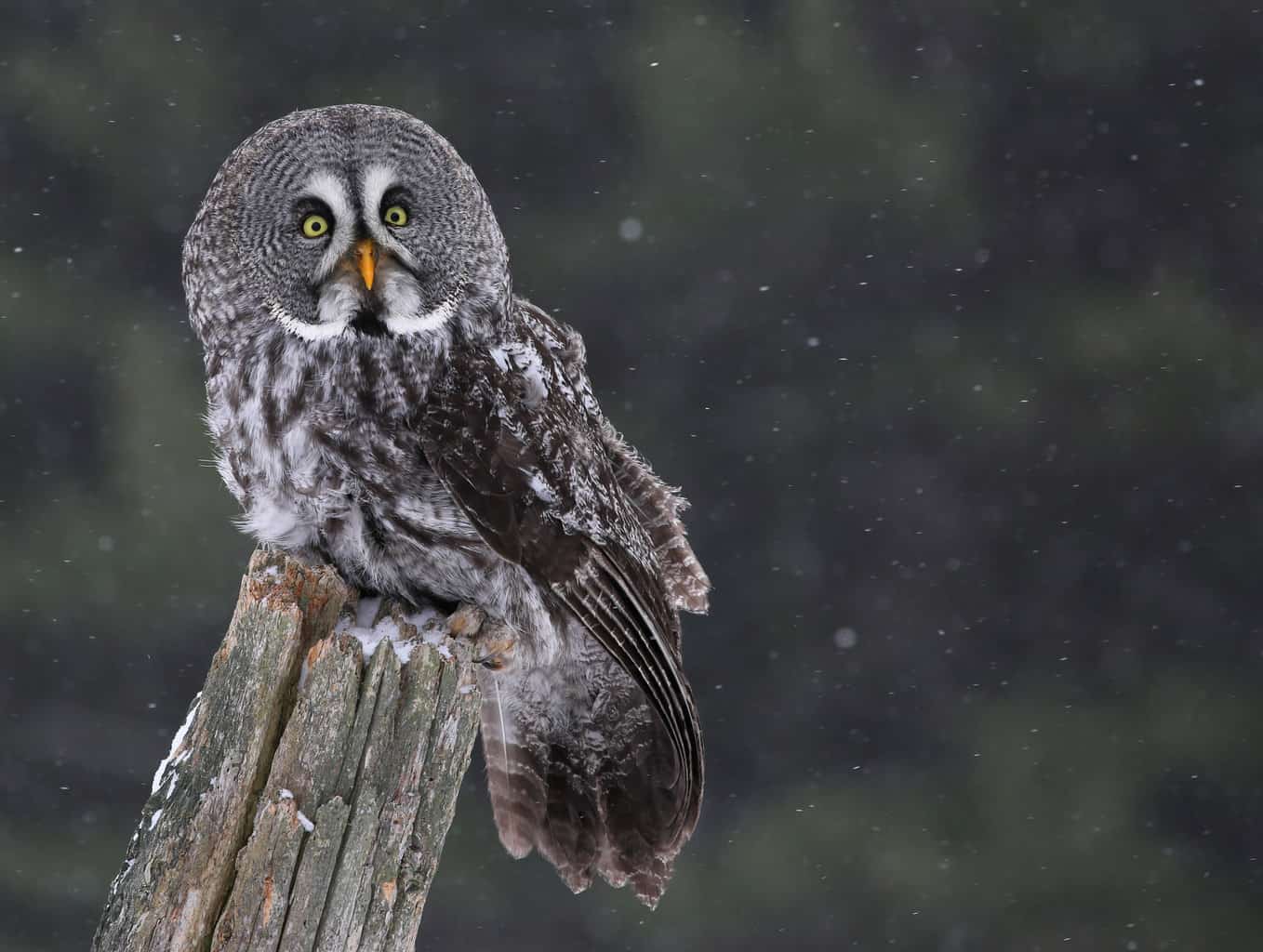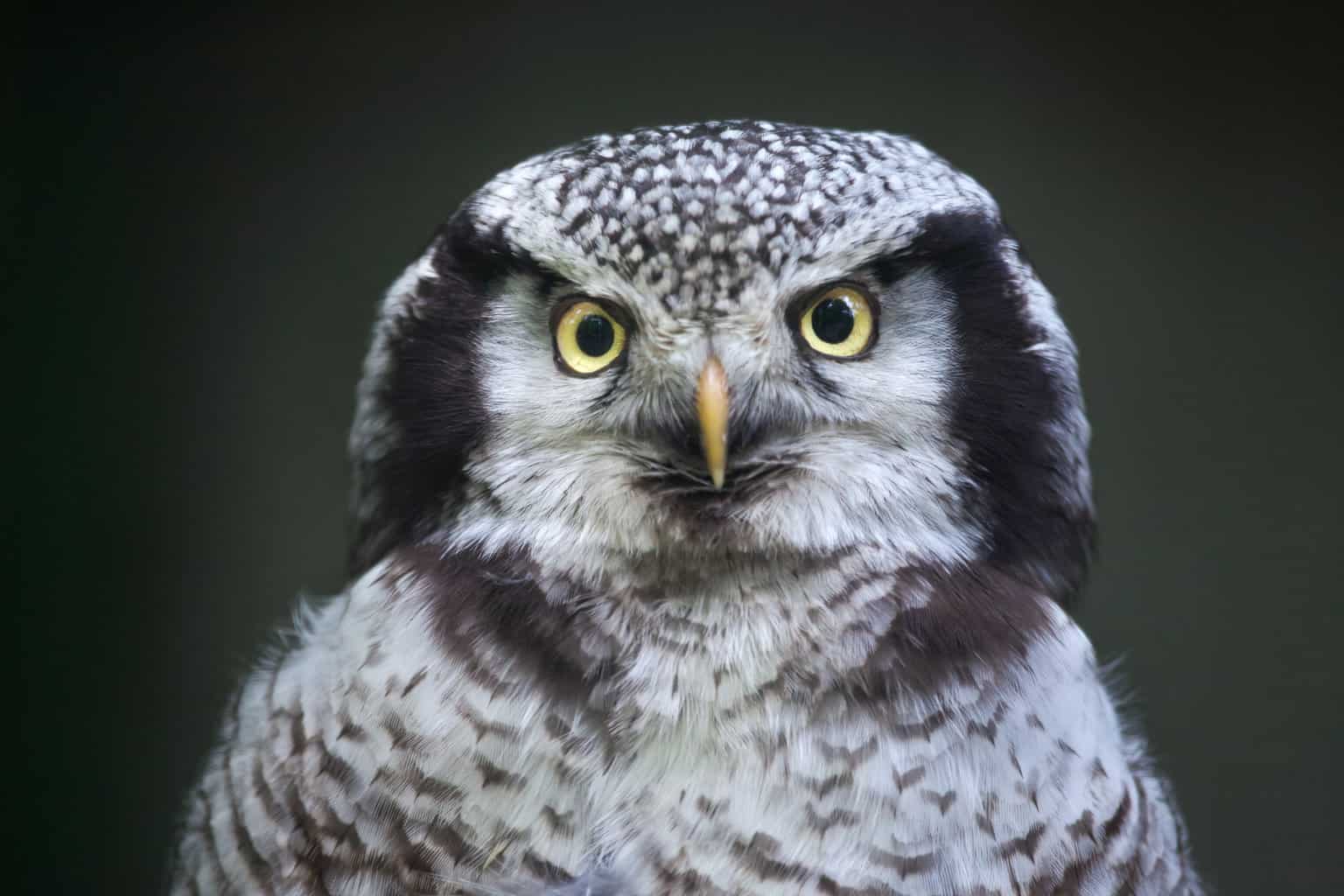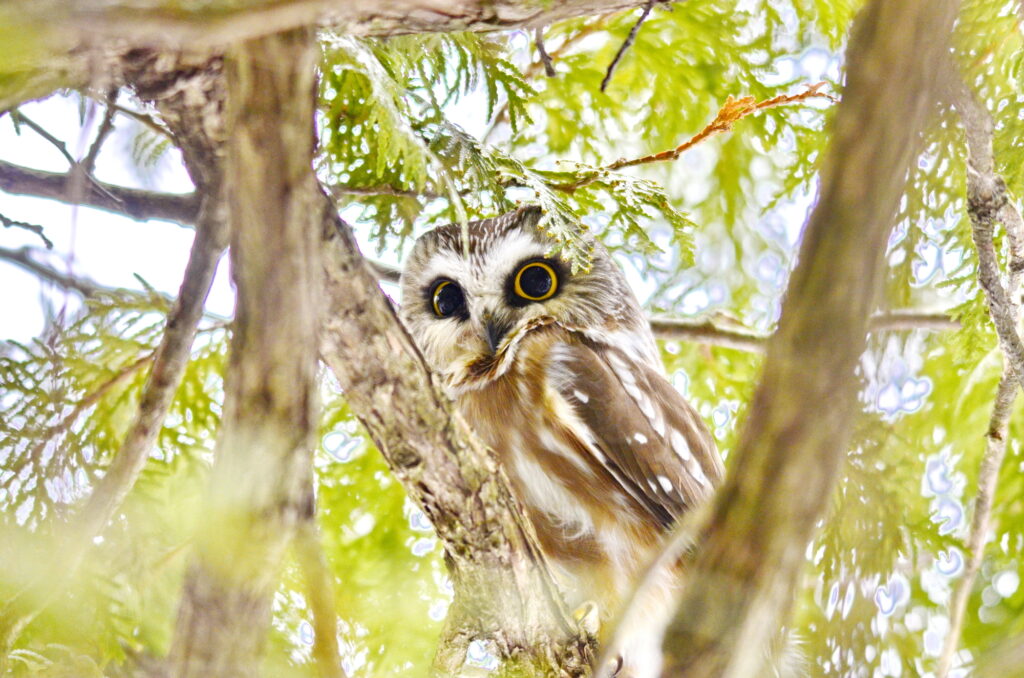We’re not kidding when we say Michigan is heaven for owls. The state is comprised of 20 million acres of forestland, covering more than half of its area—precisely 55%. Its forest area is among the largest in the US!
Not only that, but Michigan is also known for having 14 billion trees, which is more than some full countries. If owls aren’t fans of forests, they can nest in Michigan’s 103 state parks or five national parks. They’ll find enough trees either way!
It’s no wonder Michigan hosts 11 out of 19 species of owls in the US. Here’s a roundup of all the owls in the state, including the rare ones.
Barn Owl

- Scientific Name: Tyto furcata
- Length: 13 – 15 inches
- Weight: 1 – 1.3 pounds
- Wingspan: 42 – 43.3 inches
The population of Barn owls is spread throughout all of the states, Michigan included. Although the owls are endangered in the state, your chance of seeing them is still pretty high.
Your best bet at catching a Barn owl is in old abandoned buildings and under bridges. They love to nest in covered areas, so you won’t see their nests out in the open.
Barn owls are best known for their white, heart-shaped faces that make them look like ghosts in the dark. They’re strictly nocturnal, so don’t expect to run by them when the sun is up.
Barred Owl

- Scientific Name: Strix varia
- Length: 16 – 25 inches
- Weight: 1 – 2.75 pounds
- Wingspan: 38 – 49 inches
Barred owls are pretty common in Michigan, and they’re spread throughout the entire state. Their mating season is in the spring, so their activity increases around that time.
These owls are known for their vocality. You’ll likely hear them before you see them. They’re excellent camouflagers against trees, thanks to their barred bodies, so their sound may be your best bet to catch them.
Barred owls don’t migrate, even if they’re in danger. Their biggest threat wherever they go is the Great Horned owl, which feeds on their full population.
Your chances of catching Barred owls in the woods are pretty high since that’s where they spend most of their time. They mostly go out at night, though.
Short-Eared Owl

- Scientific Name: Asio flammeus
- Length: 13 – 17 inches
- Weight: 7.3 – 16.8 ounces
- Wingspan: 33.5 – 40.5 inches
If you’re seeking out Short-eared owls, you’ll get lucky in Michigan. This owl spends only the winter in most states, but it stays the whole year in Michigan, so your chances of catching it are pretty high.
Short-eared owls mostly stay in Southern Michigan, and some of them breed in the northern regions.
These owls are best known for their tiny ear tufts. They’re so small; you likely won’t see them if you don’t look closely enough.
You may catch Short-eared owls during flight because of their unusual patterns. They supposedly look a bit like bats when they’re flying, and they mostly fly at dusk and sunset.
Long-Eared Owl

- Scientific Name: Asio otus
- Length: 13.8 – 15.8 inches
- Weight: 7.8 – 15.5 ounces
- Wingspan: 35.5 – 39.5 inches
Like Short-eared owls, Long-eared ones are permanent residents in central and southern Michigan, and they breed in the northern regions. Still, your chance of catching them is at its highest during the winter, in their mating season.
These owls are known to be bullies. They spend their time scaring away other birds and stealing their nests. In fact, they rarely build their own nests, preferring to take already-built ones.
Long-eared owls are large, which makes it easier to carry out their bullying instincts. They also have tall ear tufts on top of their heads, making them pretty easy to identify.
Eastern Screech Owl

- Scientific Name: Megascops asio
- Length: 6.3 – 9.8 inches
- Weight: 4.2 – 8.6 ounces
- Wingspan: 18 – 24 inches
The Eastern Screech-owl spends all year in Michigan; the population is spread throughout the whole state except the northern part. In the spring, the owls’ activity increases because it’s their mating season.
These owls welcome nesting boxes, so you can put one in your yard and wait for a mating pair. If you’re lucky, you’ll get to see an owl doing its trademark mating dance, which includes some bowing!
Eastern Screeches are on the smaller side of the scale, and their size helps them blend well with other birds. You’ll mostly see them during the night and around dusk.
Great Horned Owl

- Scientific Name: Bubo virginianus
- Length: 17 – 25 inches
- Weight: 2.5 – 4 pounds
- Wingspan: 36 – 60 inches
The Great Horned owl is large, intimidating, and demonic. It’s one of the largest species in the US, and people aren’t big fans of it because of its aggressive nature.
These owls are known for feeding on other species; their most common prey being Barred owls. Additionally, they’re the only species that feed on skunks.
While most owls keep their peace with other prey birds, the Great Horned owls are enemies with most of them. Their most famous enemy is the Red-tailed Hawk.
Great Horned owls have yellow eyes and large ear tufts on their heads. Their appearance is intimidating, and they’re one of the few species that appear during the day.
Contrary to most owls, Great Horns like to make their presence known. You won’t need to make much of an effort trying to see them. They also stay in Michigan for the whole year.
Great Gray Owl

- Scientific Name: Strix nebulosa
- Length: 25 – 33 inches
- Weight: 1.5 – 4 pounds
- Wingspan: 60 inches
The Great Gray owl is one of the largest species in the world, and it’s the largest in North America. These owls have a non-breeding range in Michigan, and they mostly live in the Boreal Forests along The Great Lakes in the north.
Despite their large size, these owls are known for taking over the nests of other birds without doing any modifications. They mostly live in left-over nests of squirrels and ravens.
If you think Great Horned owls are scary, you’d be taken aback by how a Great Gray owl looks. It has a large facial disk with round yellow eyes, and it’s not the most handsome owl out there.
Northern Hawk Owl

- Scientific Name: Surnia ulula
- Length: 14.3 – 17.8 inches
- Weight: 12 ounces
- Wingspan: 30 – 35 inches
Northern Hawk owls don’t only look strikingly similar to hawks, but they act like them as well. They hunt during the day, so they’re easier to catch than most owls.
That being said, your chance of seeing them in Michigan is low. They’re not residents of the state, but it’s within their southernmost range. They’re rare, but some lucky watchers can catch them.
Northern Saw-Whet Owl

- Scientific Name: Aegolius acadicus
- Length: 7 – 8.3 inches
- Weight: 2.3 – 5.5 ounces
- Wingspan: 16.5 – 19 inches
For prey birds, Northern Saw-whet owls are nothing short of adorable. They have exceptionally small bodies, and their wide eyes make them look innocent and cute. They notably don’t have any ear tufts that would make them look scary.
These owls spend the whole year in Michigan, spread across its forests and parks. Your best chance of catching them is during the night because that’s when they go out to hunt.
Despite their adorable appearance, Northern Saw-whets are avid hunters. They spend most of their time flying around trees, seeking out prey.
Snowy Owl

- Scientific Name: Bubo scandiacus
- Length: 20.7 – 25 inches
- Weight: 3.3 – 4 pounds
- Wingspan: 47 – 60 inches
Snowy owls are among the largest owls in the world, and they’re classified as one of the scariest bird species on earth. Despite that, they look incredibly beautiful, thanks to their pristine white color. You’d be lucky to see one of these up close.
Snowy owls are known to attack animals twice their size, including arctic wolves. They’re not at peace with humans, either, so you’ll want to take care not to get too close.
These owls aren’t common in Michigan, but they do spend the winter in the state.
Boreal Owl

- Scientific Name: Aegolius funereus
- Length: 9.5 – 11.5 inches
- Weight: 3.5 – 7 ounces
- Wingspan: 22 – 24 inches
Boreal owls are pretty rare in Michigan. You’d be lucky to catch one of them, though small numbers of them spend the spring in the state.
The owls are nocturnal, so don’t expect to see them during the day. Additionally, their bodies are small, which makes your mission even harder.
Boreal owls spend most of their time perched up on trees, looking for prey. They have round facial disks and wide yellow eyes.
Closing Thoughts
Michigan is a pretty rich state when it comes to prey birds. Even if you don’t see the 11 species of owls, you’ll definitely run across two or three breeds.
Your best chance of catching them is in heavily forested areas. If you go out in the breeding season, you’re in for some delightful shows of dancing and bowing to female owls!
You may also run by a couple of woodpeckers in Michigan’s forests. If you don’t want to miss them, check our list of woodpeckers in Michigan.

